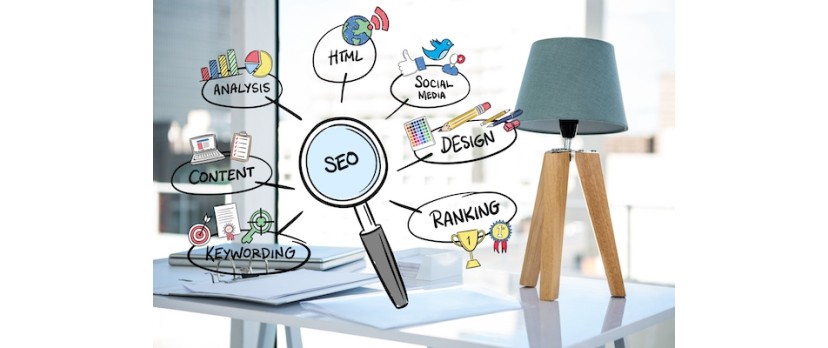Organic traffic refers to website visitors who arrive through unpaid search engine results. These users find your site by typing a query into platforms like Google, Yahoo, or Bing and clicking on non-sponsored listings. This type of traffic is not influenced by direct ad spend, making it both cost-effective and sustainable over time. To grow this segment of your audience, businesses engage in Search Engine Optimization (SEO), a digital marketing discipline focused on improving search visibility, relevance, and authority. SEO plays a vital role in enhancing organic discoverability by optimizing content, technical performance, and link-building efforts.
Why Organic Traffic Matters
Organic traffic is often considered the most valuable form of website traffic due to its ability to drive high-quality, cost-efficient, and sustainable visits to a website. It reflects genuine interest from users who are actively searching for specific information, making it a powerful indicator of relevance and trustworthiness in the digital space.
High Intent: Users who arrive organically are actively searching for information or solutions.
Cost-Efficient: No cost per click, unlike paid advertising.
Sustainable: SEO efforts have compounding benefits over time.
Businesses that consistently generate organic traffic build credibility, authority, and brand awareness without relying solely on paid marketing channels.
The Mechanics Behind Organic Visibility
To truly increase organic traffic, one must delve into how search engines determine the relevance and ranking of web pages. Search algorithms evaluate a broad range of technical and contextual signals that influence visibility and position within search results. These factors include but are not limited to:
On-Page SEO
Use of target keywords in titles, headings, and body text
Mobile-friendly and fast-loading pages
Structured data and metadata for clarity
Off-Page SEO
Backlinks from reputable websites
Brand mentions and citations
Technical SEO
Site crawlability and indexing
Secure connection (HTTPS)
Clean URL structure
When all these elements align, your site has a higher chance of appearing in top search results.
Organic Traffic vs. Paid Traffic
Paid traffic is generated through platforms like Google Ads and Facebook Ads, where every visitor comes at a defined cost. While these campaigns provide immediate visibility and quick influxes of users, their benefits are short-lived without continued spending. As soon as the ad budget is exhausted or paused, the flow of traffic ceases. In contrast, many businesses find that supplementing this with sustainable strategies, such as long-form content, link-building, or even ethically sourced traffic services, can create a more balanced and enduring approach to digital growth.
Organic traffic, on the other hand, builds long-term digital equity. A single well-optimized blog post or landing page can continue attracting thousands of visitors not just for weeks, but for years. Unlike paid ads that vanish when the budget runs out, organic content accumulates value over time, bringing in qualified leads without constant reinvestment. This compounding nature is why businesses aiming for sustainable growth prioritize SEO and invest in high-quality, evergreen content.
Pros and Cons Comparison:
Organic Traffic:
Long-term ROI
Builds trust and authority
− Takes time to see results
− Requires continuous content creation
Paid Traffic:
Instant visibility
Scalable targeting
− High cost
− Stops when the budget ends
Is Buying Links or Boosting Traffic Bad?
Some marketers argue that link building or traffic generation services are unethical or go against search engine guidelines. However, when done strategically and within guidelines, these tactics can accelerate organic performance.
When Done Right:
Guest blogging on authoritative sites
Collaborating with influencers for backlinks
Driving early traffic to new content via social sharing
Buying links recklessly or generating bot traffic can hurt your rankings. However, working with vetted platforms and focusing on content-driven link strategies are accepted parts of advanced SEO.
In fact, Google Ads, while powerful, may end up being costlier and less effective in some niches, especially when targeting cold audiences. SEO, in contrast, nurtures interest over time.
How to Increase Organic Traffic to Your Website
Here’s a comprehensive step-by-step outline to boost your website's organic reach and understand its significance:
For What?
Organic traffic helps drive relevant users to your site without paying per click. It allows you to reach potential customers who are actively searching for your product, service, or expertise.
What Improves?
With consistent SEO practices, you'll improve:
Your website’s visibility on search engines
Content relevance and structure
Technical performance (speed, mobile readiness, crawlability)
User trust and domain authority
What You Get:
Steady increase in traffic volume
Lower cost per acquisition compared to paid ads
Long-term brand awareness and engagement
Higher conversion potential from users who found you via search intent
Now, let’s walk through the core steps of increasing organic visibility:
1. Keyword Research
Identify what your audience is searching for
Use tools like Google Keyword Planner, Ahrefs, or SEMrush
Focus on low-competition, high-intent phrases
2. Content Creation
Blog posts, videos, guides, and FAQs
Answer common questions in your niche
Include internal links to keep users engaged
3. On-Page Optimization
Add keywords in title tags, headers, and metadata
Use descriptive image alt text
Maintain logical URL structures
4. Improve Technical Health
Audit with tools like Screaming Frog or Sitebulb
Fix broken links and improve site speed
Ensure mobile usability and security
5. Build Quality Backlinks
Reach out to bloggers and local publications
List your business in industry-specific directories
Use platforms like HARO (Help A Reporter Out)
6. Monitor and Adjust
Use Google Search Console to track keyword rankings
Analyze bounce rate and time on site with Google Analytics
Refresh and update old content regularly
Why You Need SEO for Organic Traffic
If you run a small business, chances are you're competing with larger brands that have more resources. This is where strategic SEO efforts become essential, helping to level the playing field and give businesses of all sizes a fair shot at visibility. Whether you're a local bakery or a niche online retailer, the ability to capture organic interest through tailored SEO tactics can dramatically improve digital performance and brand reach.
Local SEO puts you in front of nearby customers.
Content SEO showcases your expertise.
Technical SEO ensures a seamless user experience.
When users trust your content, they are more likely to convert, recommend your services, or become repeat visitors.
Final Thoughts on Organic Growth
SEO-driven organic traffic is not just a tactic; it's a growth engine. While it requires patience and consistent effort, the long-term payoff includes brand loyalty, increased sales, and lower customer acquisition costs.
Rather than viewing organic and paid strategies as rivals, treat them as complementary. Use Google Ads for seasonal pushes or new product launches, but invest in SEO for sustainable performance.
In the digital economy, those who master organic reach build digital empires.
FAQ
Q1: How long does it take to see results from organic SEO? A: Typically, 3–6 months for noticeable improvements. Competitive niches may take longer.
Q2: Can I rely only on organic traffic? A: It depends on your goals. Organic traffic is a strong foundation, but combining it with paid efforts can provide the best results.
Q3: Is it safe to buy links to increase SEO? A: Only if done carefully. Buying from reputable sources and focusing on editorial placements is key to staying within guidelines.
Q4: What’s the best way to track organic traffic growth? A: Use Google Analytics and Google Search Console to monitor visits, rankings, and engagement metrics.


Login and write down your comment.
Login my OpenCart Account